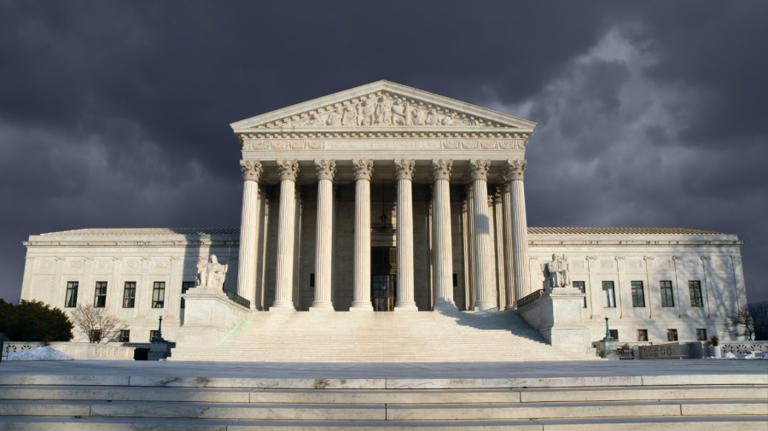Opinion by Debbie Kaminer, opinion contributor • The Hill -Yesterday

Last week the Supreme Court handed down landmark decisions on affirmative action, student loan forgiveness and LGBTQ+ rights. While these cases rightfully received significant public attention, an equally important case, Groff v. DeJoy, which addresses religious accommodation in the workplace, ended up flying under the radar. The dispute in this case, involved a Sabbatarian postal worker in rural Pennsylvania who quit his job and sued his employer after being subjected to “progressive discipline” for refusing to work his Sunday shifts.
In this surprising unanimous decision written by Justice Samuel Alito, the Supreme Court totally ignored an almost 50-year-old precedent, and significantly reinterpreted a major federal statute, Title VII of the Civil Rights Act of 1964, while pretending that it was relying on its previous decisions. It is not surprising that the conservative justices ruled as they did because some had explicitly stated that they wanted to overturn their prior narrow decision on religious accommodation. However, it comes as a real shock that every liberal Justice joined in the pretense that the court was not overturning longstanding precedent.
To understand why the court’s action is so disturbing, some background is needed. Title VII requires employers to accommodate the religious needs of employees if they can do so without “undue hardship on the conduct of the employer’s business.” In a landmark 1977 case, TWA v. Hardison, the Supreme Court interpreted “undue hardship” to mean more than a “de minimis” or minimal cost. Religious rights activists have long criticized this decision, arguing that the court interpreted undue hardship incorrectly. Regardless of whether the criticism of the “de minimis” standard is valid, the fact remained that until last week this standard was the law.
For almost 50 years, lower courts and the Equal Employment Opportunity Commission relied on the de minimis standard when addressing issues involving religious accommodation in the workplace. Even members of Congress who vehemently opposed the de minimis standard acknowledged that it was the law.
Last week, however, the Supreme Court inexplicably determined that the lower courts, Congress and the EEOC were all mistaken and that the Hardison Court did not actually mean what it said when it determined that undue hardship means requiring an employer “to bear more than a de minimis cost.” Rather, the Groff decision determined that because the Hardison Court had in other parts of its opinion stated employers were not required to provide accommodations that resulted in a “substantial” cost, this substantial cost language was the correct interpretation of undue hardship. According to Justice Alito, for the last half century everyone had read the Hardison decision incorrectly.

Newsweek Supreme Court's Unanimous Ruling On Religious Freedom Has Broad Impacts
0:59
The problem with Justice Alito’s reasoning, is that, after Hardisonwas decided, the Supreme Court itself treated the “de minimis” standard as the authoritative interpretation of undue hardship under Title VII. In Ansonia v. Philbrook, a religious accommodation case that was decided in 1986, the Supreme Court majority’s opinion stated that in Hardison “we determined that an accommodation causes ‘undue hardship’ whenever that accommodation results in “more than a de minimis cost” to the employer.” More recently, in a concurrence in a 2020 case Justices Alito, joined by Justices Clarence Thomas and Neil Gorsuch stated that Hardison “endorsed” the de minimis standard. The same three justices, along with Justice Brett Kavanaugh had a year earlier stated the Hardison Court had defined undue hardship as “any accommodation that imposes more than a de minimis burden.”
So why didn’t the court just honestly acknowledge that it was overturning longstanding precedent in replacing the “de minimis” standard with the new “substantial” burden standard? The reason is that this is not how American democracy is supposed to work. Once the Supreme Court interprets a statute, there is a strong presumption against reinterpreting that statute, since if Congress disagrees with the court’s interpretation, it can — and many times has — amended the statute by a simple majority vote. In other words, the court has the power to interpret a statute, and Congress then has the power to let the court know if it interpreted the statute incorrectly.
In fact, Congress amended Title VII in response to previous Supreme Court decisions it disagreed with. For example, in an earlier case interpreting Title VII, the Supreme Court held that sex discrimination did not include pregnancy discrimination. Congress disagreed with this decision, and in response, amended the definition of “sex” in Title VII by passing the Pregnancy Discrimination Act of 1978 to explicitly include pregnancy discrimination.
The problem religious advocates faced was that Congress tried and was unable to pass legislation overturning the de minimis standard of Title VII. Over the last 27 years, legislation attempting to overturn this standard was introduced over a dozen times and has never come close to passing.
What is shocking is that the liberal justices played along with this charade. Perhaps they joined the majority opinion as part of a compromise aimed at limiting how far the conservatives would go in expanding an employer’s accommodation requirement. Indeed, during oral arguments it was clear that the justices were looking for a compromise position. Yet regardless of why the liberal justices joined the conservatives, the result is a decision, the unanimity of which implicitly sends the message that it is reasonable. As a result, little attention has focused on the fact the court overturned a 47-year-old precedent which could dramatically impact the rights of many employees in the workplace.
Debbie Kaminer law professor at Baruch College at the City University of New York (CUNY).
No comments:
Post a Comment